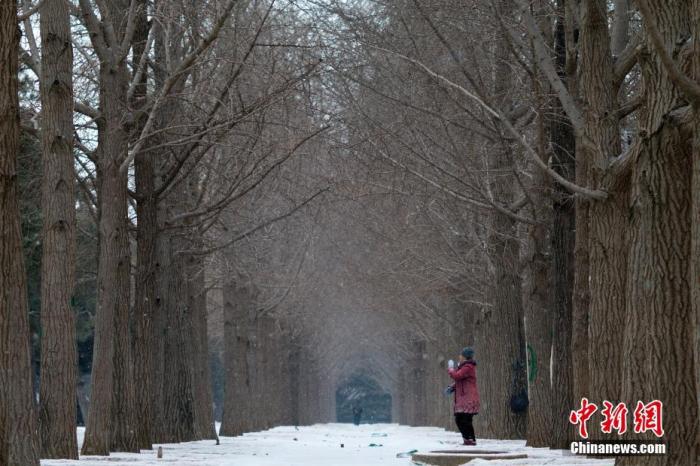China News Service, January 21. According to the website of the Central Meteorological Observatory, the Central Meteorological Observatory released the weather trend forecast and future weather outlook in late January 2022 on the 21st. In late January, there will be snowfall in eastern Gansu, Shaanxi, Shanxi, Henan, western Shandong, Hubei, etc. There will be rain to sleet or snow in the areas from Jianghuai to the middle and lower reaches of the Yangtze River, and there will be continuous low temperature rain and snow in Hubei, Hunan and Guizhou. .
Data map: Citizens exercise in the snow.
Photo by China News Agency reporter Sheng Jiapeng
In mid-January, the precipitation is low in most parts of my country, and the temperature is high
In mid-January (January 11-20), except for southern Jiangnan, Yunnan, Guangxi and Heilongjiang, where there was more precipitation, most other parts of the country had less precipitation.
In mid-January, the average temperature in Tibet, southern Qinghai, Heilongjiang, and Jilin was 1-2°C lower than the average temperature in the same period of the year, while the temperature in most other parts of my country was higher or close to normal, among which the temperature in northern Xinjiang and western Gansu was 3-6°C higher. °C.
In late January, Hubei, Hunan, and Guizhou experienced continuous low temperature, rain and snow, freezing, and more snow in Shanxi, Shaanxi
In late January (January 21-31), there was a lot of snowfall in eastern Gansu, Shaanxi, Shanxi, Henan, western Shandong, Hubei and other places, and there was rain to sleet or snow in the areas from Jianghuai to the middle and lower reaches of the Yangtze River, Hubei, Hunan and Guizhou. There is continuous low temperature, rain, snow and freezing; the accumulated precipitation in most of the above-mentioned areas is 10-30 mm, of which, Hubei, southern Jiangsu and Anhui, Hunan, Jiangxi, Zhejiang, northern Guangxi and other places have 40-60 mm, and some parts are 70 mm. ~100 mm, significantly more than the same period of the previous year.
In late January, the average temperature in the Qinghai-Tibet Plateau, Western Sichuan Plateau, Yunnan, central and southern Shaanxi, western Henan, Hubei and Hunan was 1-3°C lower than the same period of the previous year. And some parts of Fujian and other places the temperature is 2 to 3 ℃ higher.
major weather processes
From the 21st to the 23rd, there will be a large-scale rain and snow weather process in the central and eastern parts. There will be moderate to heavy snow in parts of central Inner Mongolia, Shaanxi, Shanxi, southern Hebei, Henan, western Shandong, and northwestern Hubei; northeastern Guangxi and western Hunan. , there are heavy rains in parts of eastern Guizhou, northern Jiangxi, western and southeastern Fujian.
From the 25th to the 28th, there will be a rainy and snowy weather process in the central and eastern parts of the country. There will be light to moderate snow in eastern Qinghai, eastern Gansu, Shanxi, Henan, Hubei and other places, and heavy snow or blizzard in some areas; there will be rain in the areas from Jianghuai to the middle and lower reaches of the Yangtze River. It turns to sleet or snow, and there are local blizzards; Hubei, Hunan and Guizhou have continuous low temperature rain and snow freezing.
Weather Outlook for the Next 11-20 Days
In the first ten days of February (February 1-10), Shaanxi, Hubei and southern areas were still cloudy, rainy and snowy. The accumulated precipitation in most areas was 15-25 mm, of which Hunan, Jiangxi, Zhejiang, Fujian and parts of northern Guangdong and Guangxi were The accumulated precipitation is 30-50 mm, which is more than the same period of normal years; the precipitation in the rest of China is close to normal or less.
The main precipitation process will appear from January 31 to February 3 and February 7 to 9.
In early February, the temperature in Northeast China and eastern Inner Mongolia was 1-2°C higher than the same period of normal years, and the temperature in most of the rest of my country was 1-2°C lower than the same period of normal years.

